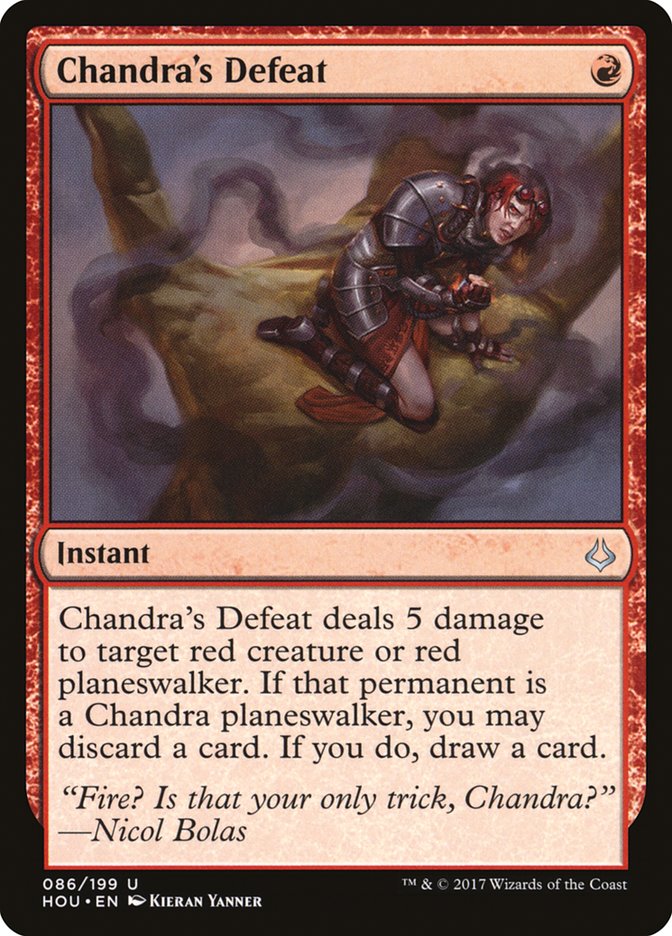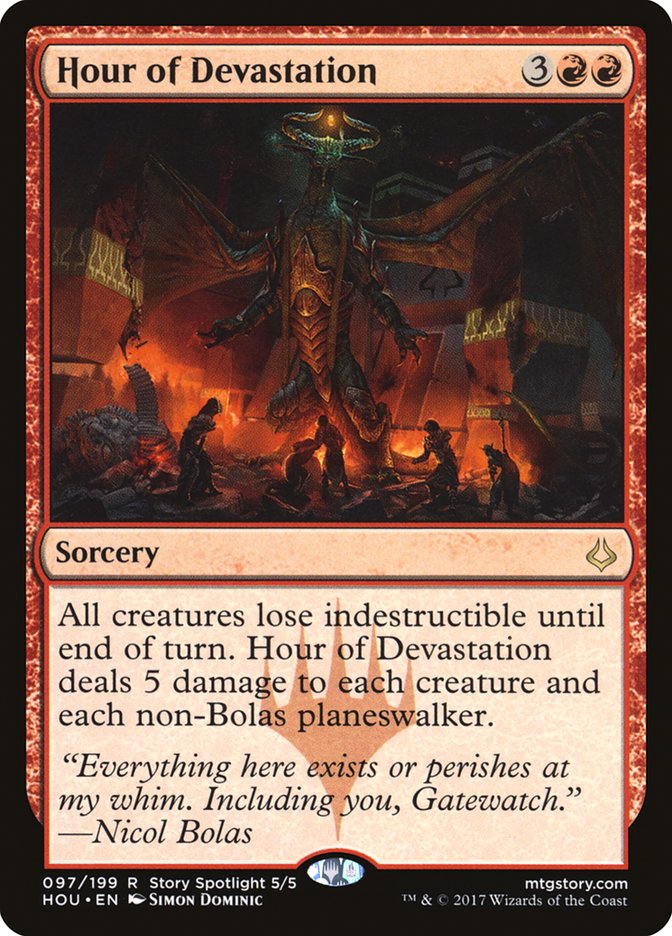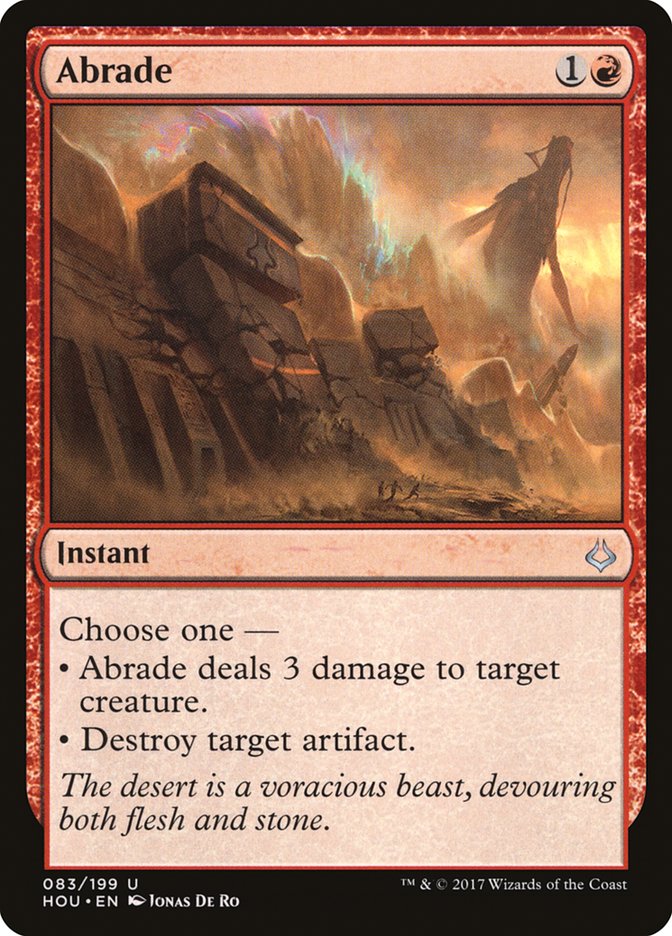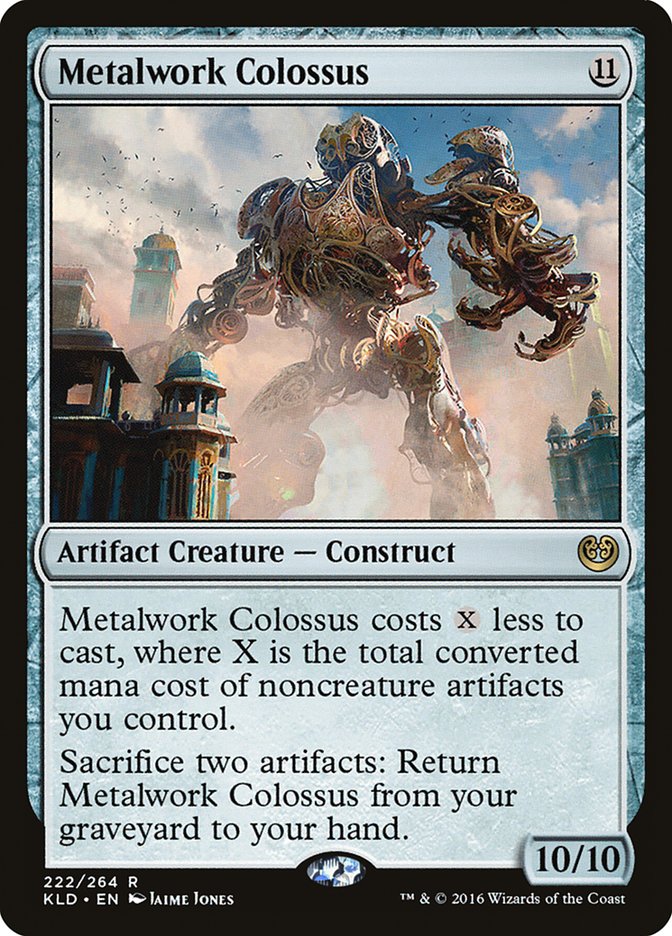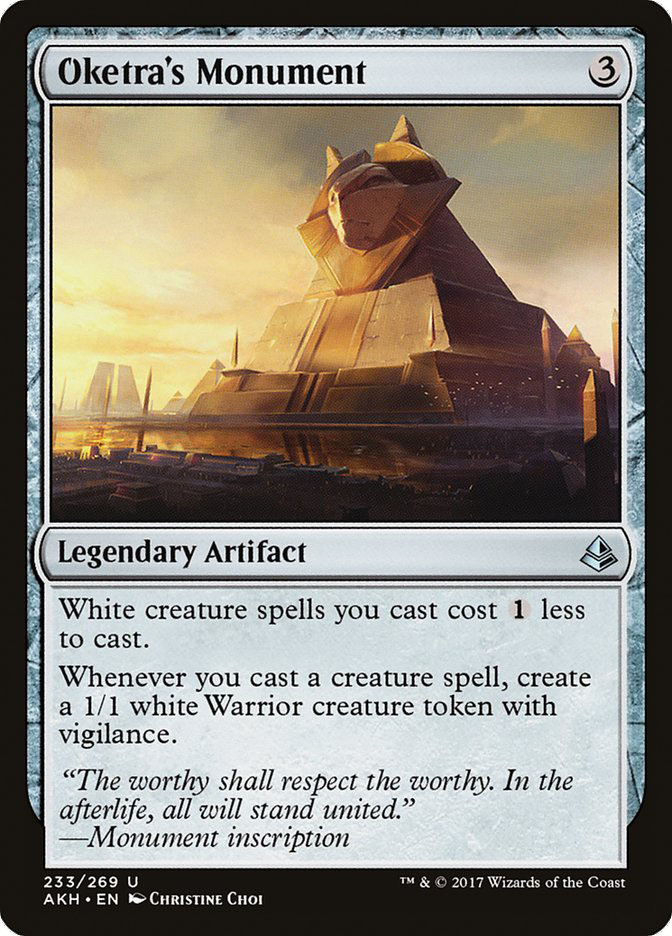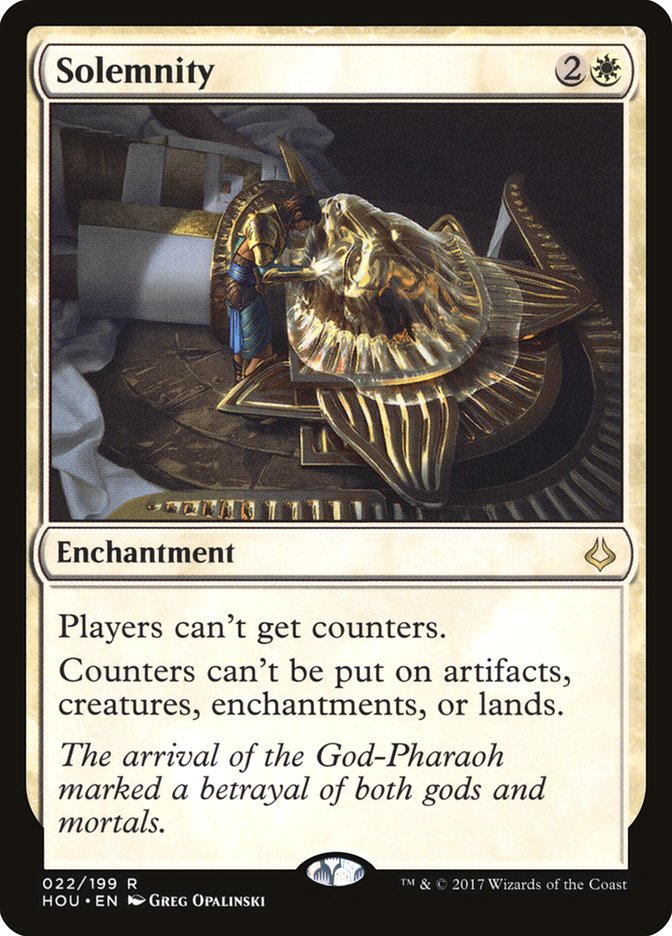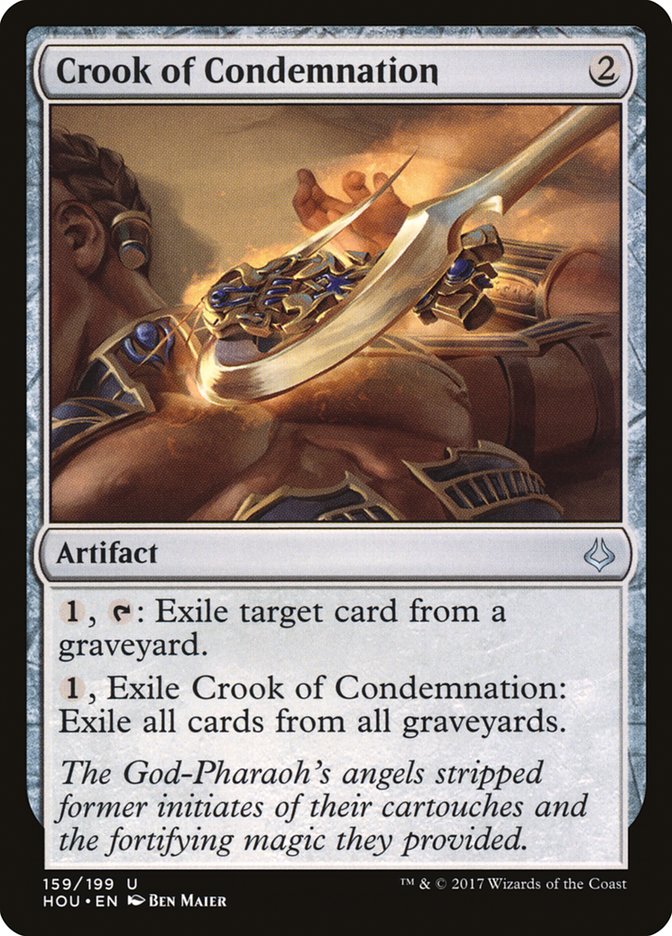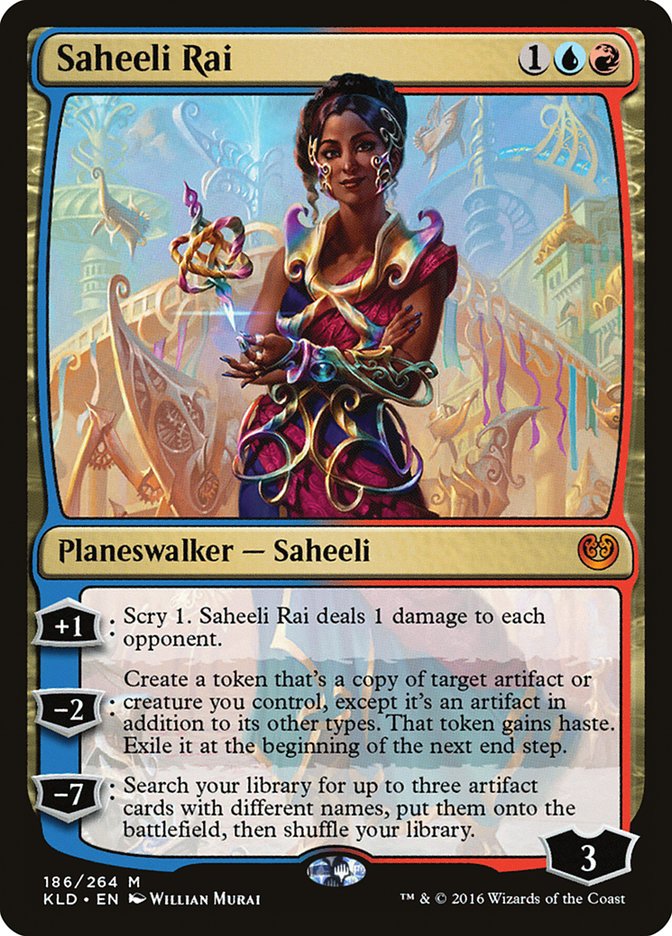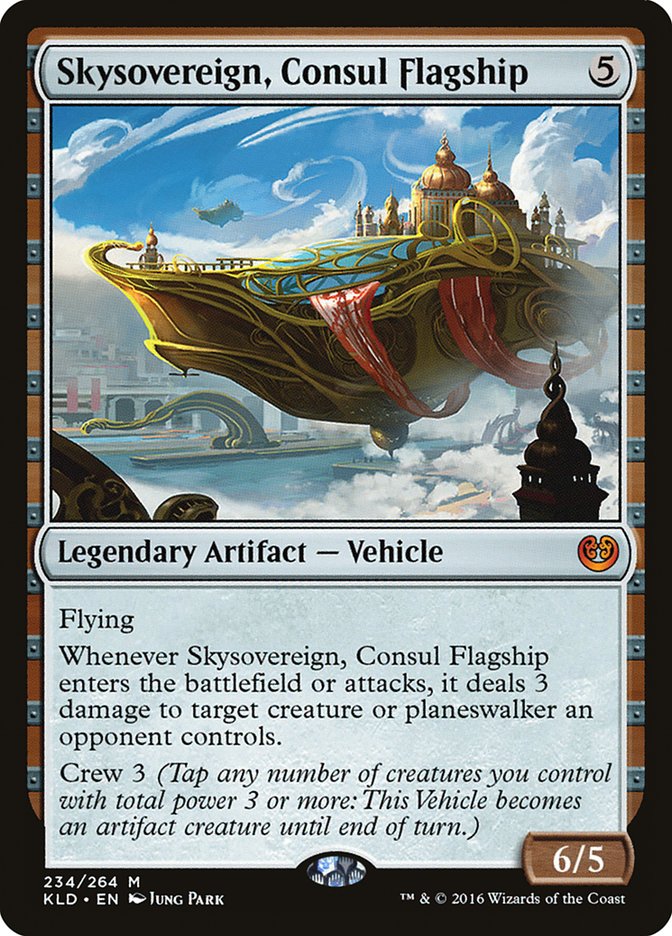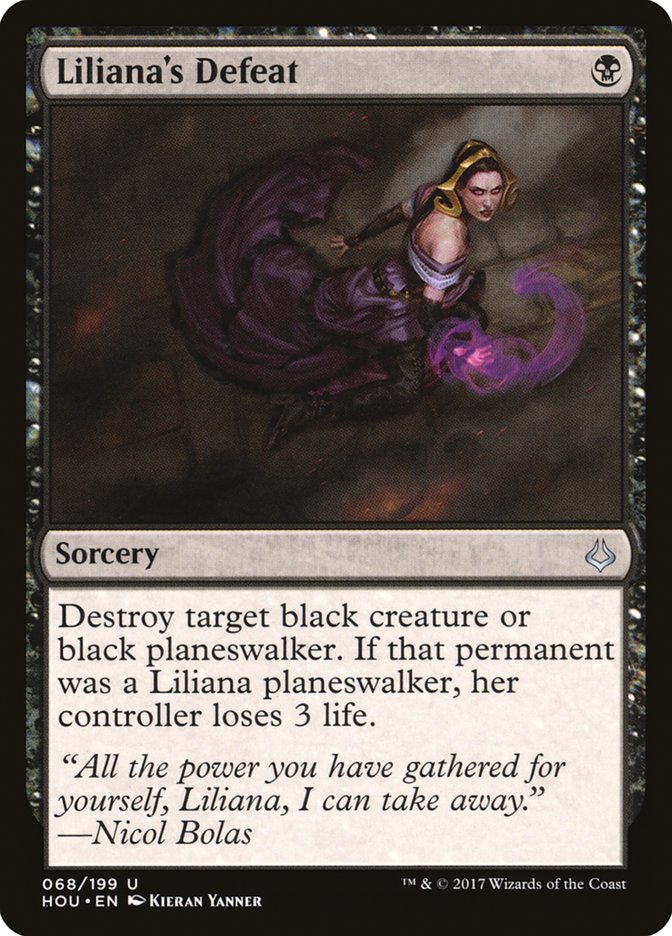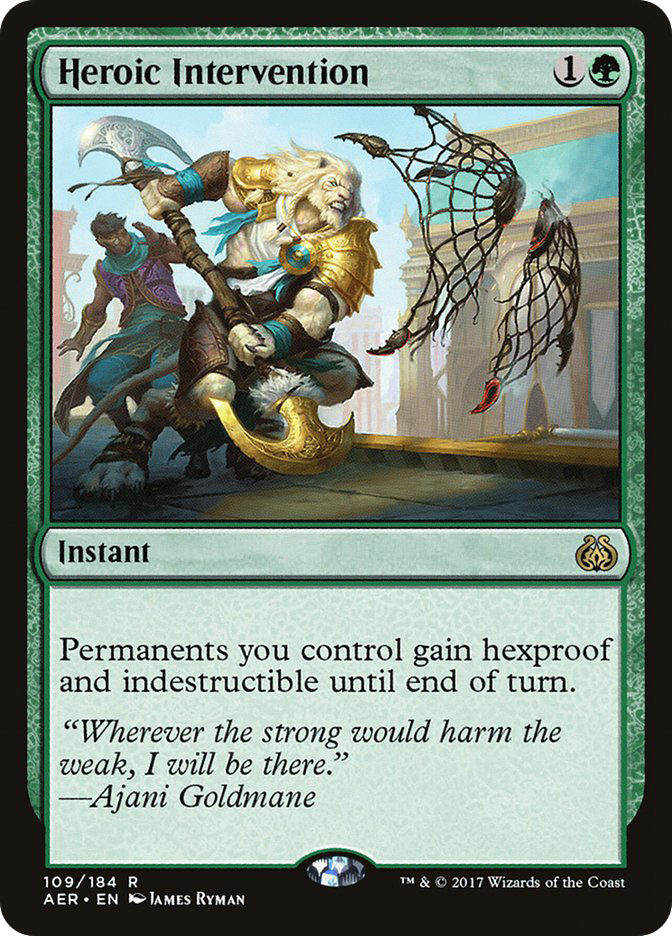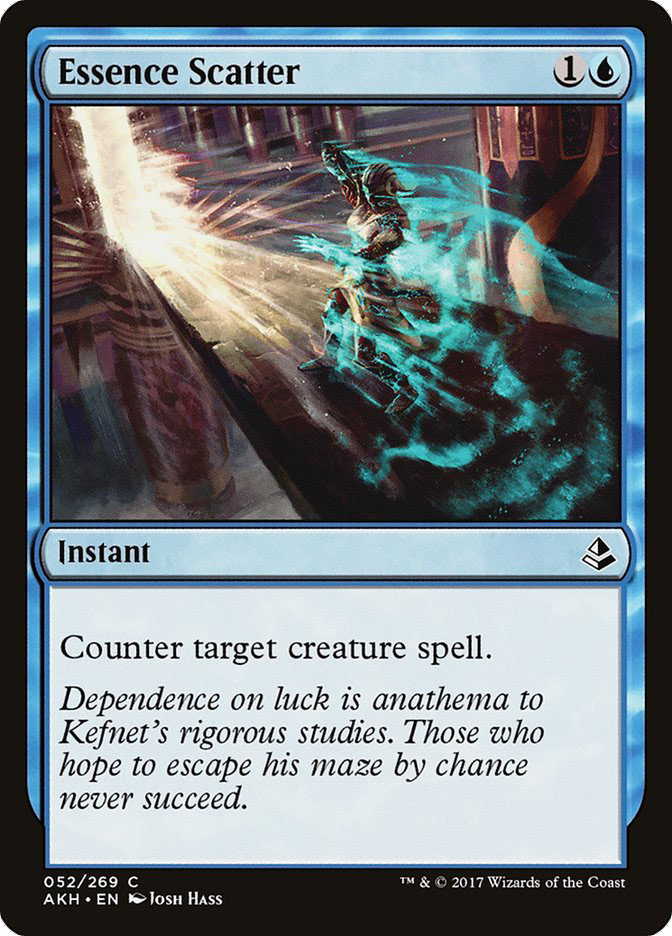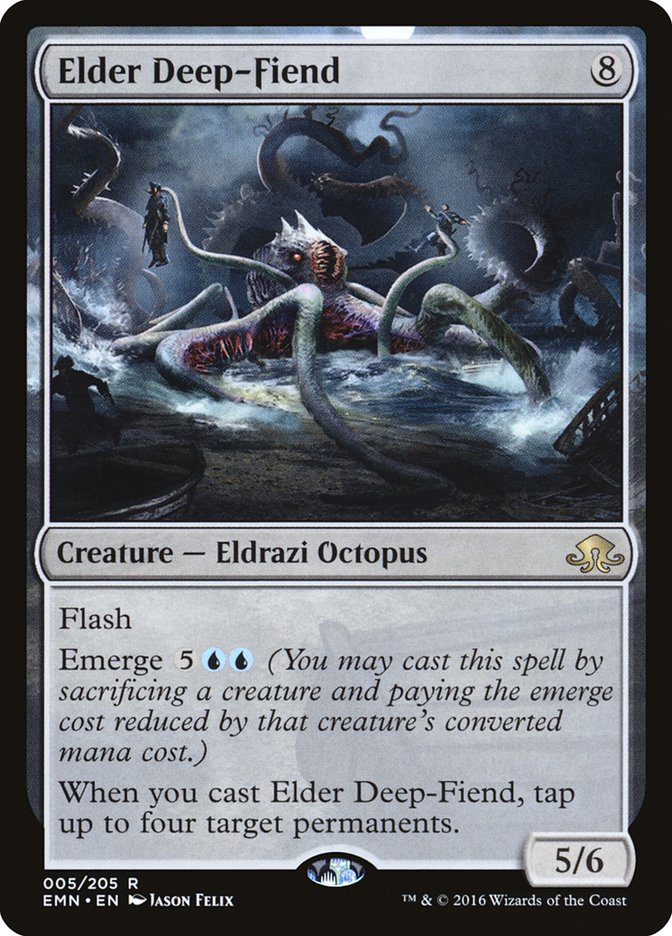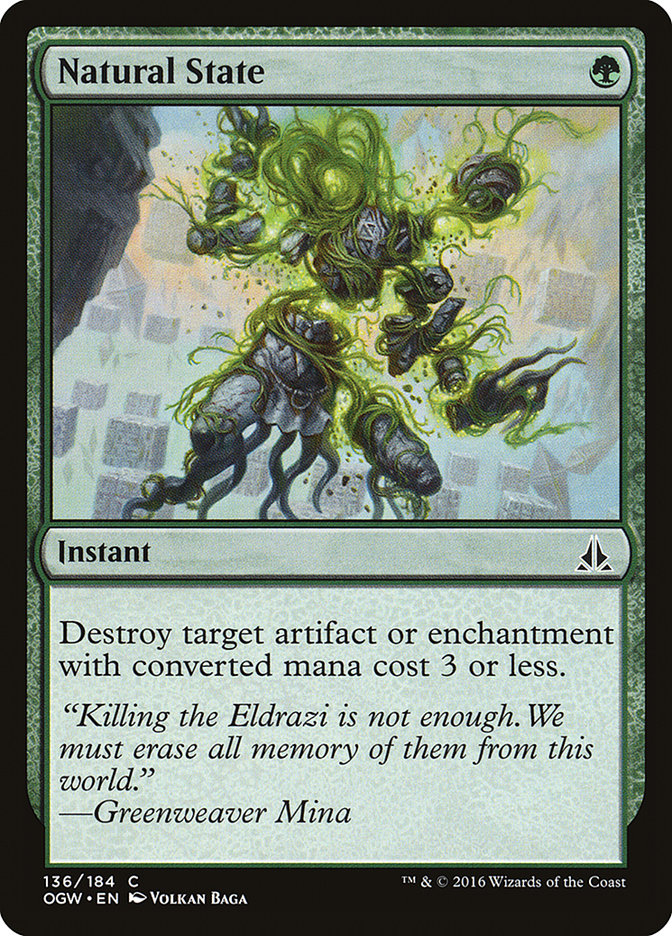The Hour of Devastation is upon us. Wizards of the Coast’s newest set is finally revealed, allowing us to get ready for #SCGCIN. Hour of Devastation is unlike any set we’ve seen in recent times, making it even more difficult to get a grasp on what’s going to happen in Standard. For the first time in a while we’ll have access to not only dedicated sideboard cards but also universal answers to the format’s high density of differing threats.
Nicol Bolas is back, and this set symbolizes that beautifully by finally providing ways to destroy anything that could get in your way. Gideon, Ally of Zendikar; Heart of Kiran; Prized Amalgam; and even energy counters are no longer safe from the destructive answers this set’s packing. How this will change Standard is still unknown, but today we’ll try our best to begin figuring it out.
We begin today’s journey of discovery in a more unconventional way. Usually it’s important to first understand the proactive applications a set will provide. Building linear shells of “aggressively slanted” decks will allow us to see better what we are trying to control. Hour of Devastation changes that scientific method, given that it’s not only the eighth set in Standard but also filled with answers to problems we’ve yet to have access to. That’s why, instead of the normal approach, today we will be looking at answers first trying to understand exactly what these new toys will do to the ever-struggling control archetype.
On the surface it’s easy to see that controlling strategies are getting a facelift. Decks like U/R Control will have Abrade in the early-game to kill Heart of Kiran whenever they please, but they also can use it to pick off a pesky Winding Constrictor. Even in the late-game, this normally early-game spell can take down a large Verdurous Gearhulk. This flexibility is something the deck has been lacking for some time now.
A little further up the curve, this color combination now has access to a sweeper that doesn’t just deal three damage in the form of Hour of Devastation. Rarely does red get a good sweeper, but when it does, the color is always a force to be reckoned with. Hour of Devastation should hold up to the hype, as it’s the first card in its color that can deal with a resolved planeswalker in some time. Gideon, Ally of Zendikar has been one of U/R Control’s biggest issues for the longest time, but Hour of Devastation may finally be the answer the color combination was looking for.
Mardu Vehicles has preyed on control since the beginning, mainly thanks to its threats being so difficult to deal with. The deck didn’t even really have to play anti-control cards thanks to how diverse its threats were relative to the format’s answers. The existence of both Abrade and Hour of Devastation will most likely force Mardu Vehicles to evolve. Finally the aggressive deck will need to diversify its own sideboard and dedicate more cards to stopping the resolution of Hour of Devastation and Hour of Revelation. Whether it’s hand disruption or countermagic, the deck will need to finally care about more things minimizing its effectiveness across the board. We will likely see the initial lists of Mardu Vehicles lean less on controlling sideboards now that the archetype cannot afford to have so many cards dedicated to it.
Abrade is also interesting in that it’s a clean answer to artifacts in the maindeck. We’ve recently seen decks like Metalwork Colossus and U/W Monument begin to take hold in the post-Marvel metagame, but both exploited the fact that their artifacts were difficult to disrupt.
How will they react to a metagame where artifact removal is more prevalent? Only time will tell. It’s clear the metagame will not be able to simply replace all copies of Harnessed Lightning, Unlicensed Disintegration, and Grasp of Darkness with Abrade. If that were to happen cards, like Archangel Avacyn, and Glorybringer would rule the roost. A mix will assuredly be correct, but one thing for certain is that decks will no longer be able to lean on a key artifact anymore.
Delirium and energy have both reveled long enough. They have yet to feel the sting of interaction, but that time is no more. Solemnity can stop energy from being accrued, causing cards like Whirler Virtuoso to go from being great against control to unplayable. Even Tireless Tracker and Longtusk Cub cannot grow in size. Solemnity will be a great answer to both B/G and Temur Energy, since both these midrange decks need time to slowly dismantle a control deck. Every resource is necessary in their quest for a win. The games go long, causing the lasting effect of Solemnity to be that much more potent.
Crook of Condemnation does to delirium what Solemnity does to energy. Delirium-based strategies are designed around the fact that they will gain small advantages all game long thanks to delirium. That all changes when the deck can’t rely on three Spider tokens or Traverse the Ulvenwald searching up additional threats. Both Energy and Delirium decks preyed on the fact that control couldn’t interact with one of their key resources. That time is no more, making it very difficult for me to believe these decks will continue to look the same as they did.
There are no longer back alleys for us to operate beyond the hand of control. They now have the ability to control us no matter where we go. The way we’ve attacked control decks is no more, and I believe we will need to look back at more traditional ways to fight them. Just because they have new answers doesn’t mean we can’t sharpen our tools, though. Generic card advantage engines, hand disruption, and even countermagic will become the new norm.
Many of you out there are excited about Control coming back stronger than ever. I for one couldn’t be less thrilled, but there is some silver lining to all this. If control comes back, decks will need to respect it more than they have in the past. Like I said earlier, decks like Mardu Vehicles can sideboard in Chandra, Torch of Defiance and Painful Truths and call it a day. Everyone will not only have to allocate more sideboard space to beating control decks, but possibly even manipulate maindecks to stand a better chance at beating them. A good example of this would be B/G Constrictor decks playing Scrapheap Scrounger in the maindeck. If this happens, we may finally get out of one of the most monotonous midrange moments in Standard’s history.
I’ve actually really disliked this Standard format from Start // Finish. Why, you may ask? Well the answer is I disliked how midrange everything got. Even during our darkest times with Emrakul-Marvel, Four-Color Saheeli, and Ulamog-Marvel, we still saw them all turn into midrange decks before they finally took on their perfect forms. It didn’t really even matter what two decks were being played; after sideboarding, they would both begin to resemble midrange decks.
Even control decks did this! Without proper answers to threats, control decks would sideboard in Thing in the Ice, Glorybringer, Dragonmaster Outcast, or even Archangel Avacyn. It just didn’t matter! Everything always seemed to turn into midrange mirrors. Even now the most prominent sideboard card is Skysovereign, Consul Flagship. Why wouldn’t it be when it comes in against half the decks? It was fun for a while, but at this point I’m just sick of it.
What Wizards could learn from this format is that you can’t design so many backdoors without enough universal answers. There just weren’t enough reliable answers to threats, but at the same time, every strategy had many ways to exploit that fact. Energy could be dumped into Whirler Virtuoso against control decks in the last moments to steal games, Scrapheap Scrounger could relentlessly beat down in the later turns, and even a Mono-White Aggro deck could return its entire graveyard back to its hand. These new cards should hopefully pull us out of this midrange era and bring us back into a more normalized metagame with aggro, midrange, control, and ramp.
This is still all theory, but I could see sideboards begin to look more like Modern ones as opposed to what they have been for some time. After all, hate cards exist now, which means any deck could have a way to interact with graveyards. Mardu Vehicles might even want to play Solemnity to fight off Walking Ballista and the synergies that come along with Winding Constrictor. Who really knows what’s going to happen now that Hour of Devastation is here? The only thing that is clear is that things will for sure be changing.
The format finally gaining answers is great, but that’s not the end of the story. Magic’s ability to be cyclical is one of the reasons why they game’s still popular after 25 years. Standard is chock-full of answers to these answers, but they just haven’t needed to be played thus far. Who knows if they will need to heed the call to arms, but knowing they exist is a relief in and of itself. I’ve had my eye on a few, as I believe they will soon begin to see a lot more sideboard action.
Temur Energy has access to Negate as an answer to sweepers, but luckily any green deck can use Heroic Intervention to get around any pesky battlefield wipes they might start to play against us. This card might not counter a planeswalker like Negate can, but it does do something blue countermagic could only dream of. This card is also a perfect answer to Elder Deep-Fiend. Now, we haven’t seen Elder Deep-Fiend that much as of late, but that’s mostly due to all the other broken things this format recently had to offer. Most of it is now banned, meaning the once absurdly powerful “Kraken” is most likely good again.
Elder Deep-Fiend never comes alone. It’s almost always accompanied by Kozilek’s Return, which is a beating for any deck trying to beat down. Heroic Intervention is the cleanest answer to this combo, as it not only protects every creature from Kozilek’s Return but also “Stifle” Elder Deep-Fiend’s ability to tap any creatures down. I haven’t cast this card much, but when I have, it was absolutely devastating against mass removal. I don’t see that changing anytime soon. Be sure to think about this card from either side of the fight.
Something interesting has begun to happen ever since Aetherworks Marvel was banned. Three creatures have become more popular as of late, and all three of them have something in common: they all are most effective when cast on an opponent’s turn. They’re almost too good, in fact, to be cast outside of an opponent’s turn.
I believe all three of these creatures will see more and more play as the format evolves, making Essence Scatter their natural predator. It’s just so easy to play this counterspell against these threats, since they will almost always come down before combat has concluded. This makes it very easy to tap out with Essence Scatter in your hand, yet never get punished for doing so. It’s definitely strange to play this narrow counterspell in a sideboard, but its efficiency right now is through the roof. Keep that in mind when you’re building a sideboard and looking for something to cross over against two or more of these decks.
There have been many upgrades to this artifact/enchantment removal spell, but it might be high time for it to make a comeback as an answer to both Solemnity and Crook of Condemnation while also dealing with Heart of Kiran and Oketra’s Monument. As cards get more diverse, so should the answers. It might not be as efficient as Manglehorn or as powerful as Release the Gremlins, but it at least can stop Solemnity from taking complete control over a game. I guess maybe Appetite of the Unnatural or Root Out would also work, but I’ve always liked my answers to answers to be as cheap as possible.
From here, it’s up to the masses on how this format will progress. Luckily the set makes its way to Magic Online this Monday, which means we will all have a few days to prepare for SCG Cincinnati. I know I will be hard at work starting next week to provide you with tried-and-true strategies to take to the event, but what you’ll have to do on your own is think carefully about how sideboards will impact the format.
Last time around, we saw Mardu Vehicles dominate an Open in the hands of Andrew Jessup thanks to his understanding of sideboarding. Make sure it’s you who carefully thought through the impact a sideboard can have on an event this time around.


